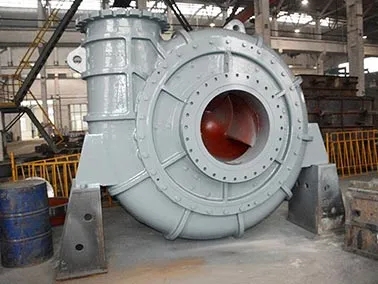Oct . 09, 2024 00:37 Back to list
Efficient Underwater Dredging Solutions with Advanced Hydraulic Submersible Pumps
Understanding Hydraulic Submersible Dredge Pumps
Hydraulic submersible dredge pumps are essential tools in the field of dredging, widely employed for sediment removal, underwater construction, and environmental restoration. These pumps excel at transferring slurry — a mixture of water and solid materials such as sand, mud, or gravel — from underwater sites to desired locations. Unlike traditional dredging methods, hydraulic submersible dredge pumps operate underwater, making them particularly efficient in deep-water scenarios and minimizing environmental impact.
The design of a hydraulic submersible dredge pump is a marvel of engineering. Typically, these pumps consist of a robust electric or diesel-powered motor driving an impeller located at the pump's bottom, allowing them to create significant suction. This design enables the pump to function effectively at varying depths, adapting to different operational requirements. Furthermore, hydraulic submersible dredge pumps are built to endure harsh underwater conditions, featuring corrosion-resistant materials and robust seals to prevent water ingress.
One of the standout features of hydraulic submersible dredge pumps is their versatility. They can handle a wide range of materials, from fine sediments to larger aggregates, which makes them suitable for various applications such as harbor maintenance, river dredging, and beach nourishment projects. Their ability to operate in tight spaces and maneuver around obstacles also distinguishes them from other dredging equipment.
hydraulic submersible dredge pump

In addition to their practical applications, the use of hydraulic submersible dredge pumps contributes to environmental sustainability. By efficiently removing sediment, these pumps can help restore aquatic habitats, improve water quality, and reduce flood risks. Moreover, their ability to accurately target specific areas minimizes disturbances to surrounding ecosystems, making them a preferred choice for environmentally-conscious dredging projects.
However, as with any heavy machinery, proper maintenance and operation are crucial to ensure optimal performance and longevity of hydraulic submersible dredge pumps. Regular inspections, monitoring of wear and tear, and adherence to manufacturer guidelines can help mitigate potential issues and ensure safe operation.
In conclusion, hydraulic submersible dredge pumps are vital assets in the dredging industry. Their innovative design, versatility, and minimal environmental impact make them indispensable for various underwater applications. As the demand for effective sediment management continues to grow, these pumps are poised to play an even more significant role in sustainable marine engineering practices.
-
Wholesale Casting Dredge Pump Part - High Quality China Manufacturers & Suppliers
NewsJul.04,2025
-
High Quality Slurry Pump Seals Reliable China Suppliers & Manufacturers
NewsJun.24,2025
-
High Quality Portable Submersible Slurry Pump Supplier & Manufacturer from China
NewsJun.10,2025
-
Slurry Pump Parts Manufacturer – High Quality Rubber Spare Parts from China
NewsJun.10,2025
-
High Quality 1/3 HP Submersible Sump Pump with Vertical - Reliable Supplier & Factory Price
NewsJun.10,2025
-
High-Efficiency Centrifugal Slurry Pumps India
NewsJun.10,2025
